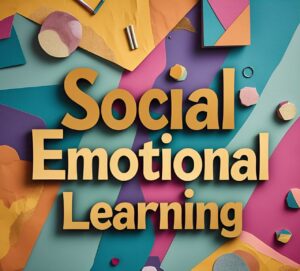
In today’s digital age, technology plays a significant role in education, transforming the way students learn and teachers teach. Integrating technology in education can enhance learning experiences, engage students, and prepare them for the 21st-century workforce. In this article, we will explore 20 approaches to effectively integrate technology in education and harness its full potential for enhanced learning outcomes.

1. Set Clear Learning Objectives
Before integrating technology, establish clear learning objectives. Determine what you want your students to achieve and how technology can support those goals. Align technology integration with the curriculum to ensure it enhances and extends the learning experience.
2. Provide Adequate Professional Development
Equip educators with the necessary skills and knowledge to effectively integrate technology in the classroom. Offer professional development opportunities that focus on digital literacy, pedagogical strategies, and specific technology tools. Ongoing support and training are essential for teachers to feel confident and proficient in using technology.
3. Embrace Blended Learning
Implement a blended learning approach that combines traditional face-to-face instruction with online and digital resources. Use learning management systems and online platforms to deliver content, facilitate discussions, and provide opportunities for independent learning. Blended learning allows for flexibility and personalization of instruction.
4. Use Interactive Whiteboards
Utilize interactive whiteboards as a versatile tool for whole-class instruction. These interactive displays enable teachers to deliver engaging multimedia presentations, annotate content, and encourage student participation. Interactive whiteboards facilitate dynamic and interactive learning experiences.
5. Foster Collaboration with Online Tools
Integrate online collaboration tools, such as Google Docs or Microsoft Teams, to promote teamwork and collaboration among students. These tools allow students to collaborate on projects, share documents, provide feedback, and work together in real-time, regardless of their physical location.
6. Incorporate Gamification
Leverage gamification to enhance student engagement and motivation. Introduce educational games and interactive simulations that make learning enjoyable and immersive. Gamification can provide immediate feedback, foster competition, and create a sense of achievement, all of which can positively impact student learning.
7. Explore Virtual Reality (VR) and Augmented Reality (AR)
Introduce virtual reality (VR) and augmented reality (AR) experiences to create immersive learning opportunities. VR allows students to explore virtual environments, visit historical sites, or engage in virtual experiments. AR overlays digital content onto the real world, enhancing understanding and interaction with physical objects.
8. Encourage Digital Storytelling
Promote digital storytelling as a creative and reflective learning tool. Students can use various multimedia tools, such as video editing software or digital storybook apps, to create and share their narratives. Digital storytelling enhances communication skills, creativity, and critical thinking.
9. Facilitate Personalized Learning
Use adaptive learning platforms and intelligent tutoring systems to provide personalized learning experiences for students. These tools analyze individual performance data and adjust instruction to meet the specific needs and pace of each student. Personalized learning maximizes student engagement and promotes academic growth.
10. Implement Online Assessments
Introduce online assessments to streamline the grading process and gather real-time data on student performance. Online quizzes, tests, and formative assessments provide immediate feedback, identify areas of improvement, and allow for differentiated instruction. Online assessments save time and provide valuable insights into student progress.
11. Promote Digital Citizenship
Teach students about digital citizenship, including online safety, responsible technology use, and ethical behavior. Discuss topics such as cyberbullying, plagiarism, and digital footprints. Instilling good digital citizenship practices prepares students to navigate the digital world responsibly and ethically.
12. Create Multimedia Presentations
Encourage students to create multimedia presentations to demonstrate their understanding of concepts. Students can use presentation tools like PowerPoint or Prezi to combine text, images, audio, and video elements. Multimedia presentations develop communication skills and enhance content comprehension.
13. Leverage Mobile Devices
Harness the power of mobile devices, such as smartphones and tablets, for learning purposes. Mobile apps, educational games, and e-books provide convenient access to educational resources anytime, anywhere. Mobile devices can support personalized learning and facilitate research and collaboration.
14. Engage with Online Discussion Forums
Integrate online discussion forums or social learning platforms to facilitate asynchronous discussions among students. These platforms enable students to engage in meaningful conversations, share perspectives, and collaborate on projects beyond the confines of the classroom. Online discussions promote critical thinking and digital communication skills.
15. Introduce Coding and Robotics
Introduce coding and robotics activities to develop computational thinking and problem-solving skills. Coding platforms and robotics kits allow students to learn programming concepts and apply them in real-world scenarios. These activities foster creativity, logical reasoning, and innovation.
16. Utilize Data Analytics
Harness the power of data analytics to gain insights into student progress and inform instructional decisions. Learning analytics tools can track student performance, identify learning gaps, and provide recommendations for personalized interventions. Data-driven decision-making enhances student outcomes and supports targeted instruction.
17. Provide Virtual Field Trips
Offer virtual field trips to explore places and concepts beyond the classroom walls. Virtual tours, online museums, or live video conferences with experts bring real-world experiences into the learning environment. Virtual field trips broaden students’ perspectives and deepen their understanding of various subjects.
18. Promote Digital Portfolios
Encourage students to create digital portfolios to showcase their learning journey and accomplishments. Digital portfolios can include artifacts, reflections, and evidence of growth over time. They provide a holistic view of student progress and can be shared with peers, teachers, and potential employers.
19. Integrate Social Media
Integrate social media platforms into the classroom to facilitate communication, collaboration, and information sharing. Establish guidelines for responsible social media use and leverage platforms like Twitter or Edmodo for class discussions, resource sharing, and connecting with experts in the field.
20. Foster Global Connections
Use technology to foster global connections and promote cultural exchange. Engage in virtual pen-pal programs, video conferences with students from other countries, or participate in online collaborative projects. By connecting with peers from diverse backgrounds, students develop global awareness and empathy.
Integrating technology in education opens up a world of possibilities for enhanced learning experiences. By implementing these 20 approaches, educators can leverage technology to engage students, personalize learning, foster collaboration, and prepare students for the digital age. Remember, effective technology integration requires thoughtful planning, ongoing professional development, and alignment with learning objectives. When used purposefully and with pedagogical intention, technology can empower both teachers and students to achieve better educational outcomes.





